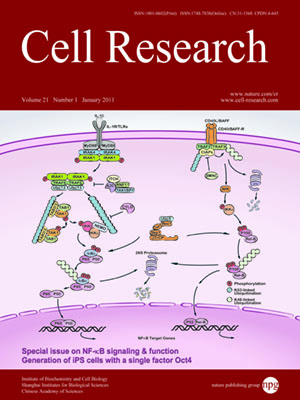
Volume 21, No 1, Jan 2011
ISSN: 1001-0602
EISSN: 1748-7838 2018
impact factor 17.848*
(Clarivate Analytics, 2019)
Volume 21 Issue 1, January 2011: 159-168
REVIEWS
NF-κB and STAT3 — key players in liver inflammation and cancer
Guobin He1,2 and Michael Karin1
1Laboratory of Gene Regulation and Signal Transduction, School of Medicine, University of California at San Diego, 9500 Gilman Drive MC 0723, La Jolla, CA 92093-0723, USA
2Current address: Isis Pharmaceuticals Inc., 1896 Rutherford Road, Carlsbad, CA 92008?326. E-mail: ghe@isisph.com
Correspondence: Michael Karin,(karinoffice@ucsd.edu)
Hepatocellular carcinoma (HCC), the major form of primary liver cancer, is one of the most deadly human cancers. The pathogenesis of HCC is frequently linked with continuous hepatocyte death, inflammatory cell infiltration and compensatory liver regeneration. Understanding the molecular signaling pathways driving or mediating these processes during liver tumorigenesis is important for the identification of novel therapeutic targets for this dreadful disease. The classical IKKβ-dependent NF-κB signaling pathway has been shown to promote hepatocyte survival in both developing and adult livers. In addition, it also plays a crucial role in liver inflammatory responses by controlling the expression of an array of growth factors and cytokines. One of these cytokines is IL-6, which is best known for its role in the liver acute phase response. IL-6 exerts many of its functions via activation of STAT3, a transcription factor found to be important for HCC development. This review will focus on recent studies on the roles of NF-κB and STAT3 in liver cancer. Interactions between the two pathways and their potential as therapeutic targets will also be discussed.
Cell Research (2011) 21:159-168. doi:10.1038/cr.2010.183; published online 28 December 2010
FULL TEXT | PDF
Browse 2259


